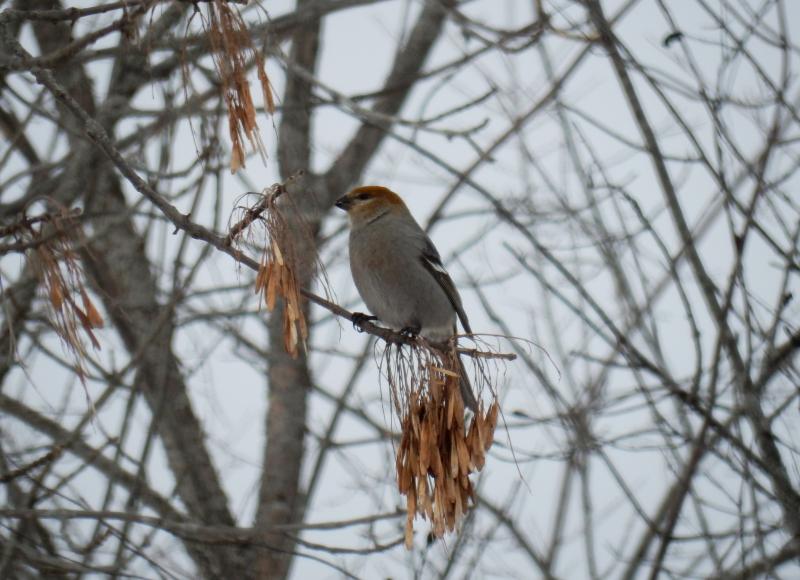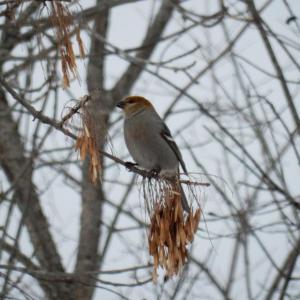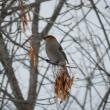Mindfulness Birding: Our Maine Big Year
Mindfulness birding. That’s how we are describing the Maine Big Year we have decided to try to do in 2019. If you never saw the movie “The Big Year” then you may not know that the premise of a “Big Year” in birding is that you try to see how many different species of bird you can find within a particular geographic area in one calendar year. In the movie, three avid birders, portrayed by Steve Martin, Jack Black, and Owen Wilson, compete to see the most species in the U.S. within a year. Based in part on a true story of three birders who competed in 1998, the winner that year found 748 species within the continental U.S. Birders can, of course, choose any particular geographic area within which to keep track of the bird species that they find within a year. Some highly ambitious birders have even carried out global big years during which they may tally thousands of species (the world record is over 6,800 species!).
When we lived in Ithaca, New York, we and others in the birding community became aware of the annual big year efforts of a local professor and birder named Karl David who enthusiastically tried to find as many species as possible within the rather obscure boundaries of a watershed called the Cayuga Lake Basin. Ithaca is a small city (some would say “town”) in upstate New York where Cornell University and Ithaca College are located. It sits at the south end of a long, narrow lake called Cayuga Lake—one of the famous Finger Lakes. They are called the Finger Lakes because from the high elevation view of an airplane (or as portrayed on a map) this series of long, thin, north-south oriented lakes spread across the plain south of Lake Ontario do indeed look like the fingers of a giant hand.
The lakes are unusual in that each one has its own rather extensive watershed (basin) of streams that flow into the lake from the higher lands that surround it. Cayuga Lake is no exception, and a number of the streams that flow into the lake do so over high, spectacular waterfalls to which thousands of people are drawn each year to gaze in awe and photograph. Ithaca birders kept track of their sightings within the Cayuga Lake Basin for decades, but the race for finding the most birds in “The Basin” took on a new, more serious level some time after Karl moved to the area in the 1980s. In the 1990s the Cayuga Lake Basin big year competition really took off, and for fun, it became the quest for “The David Cup.” Hopefully all of you will see the humor in that the name both honors Karl David and is take-off from the famous Davis Cup competition in tennis. In 1996 the two of us started a monthly electronic publication, distributed over email, called “The Cup” (issues of which are archived online (in the primitive email formatting that was a sign of the times) - a great way for us all to poke fun at our collective bird-obsessed selves as we competed in the Cayuga Lake Basin Big Year.
Today, and back here at home in Maine, we have more modest goals. We want to use the impetus of doing a laid-back Big Year here in our beloved state as a way to enjoy the birds that help make each season here in our state special. Although now tempered with sadness, we started 2019 with a trip to Portland where we saw the amazing great black hawk and a snowy owl, both on January 1- what a way to start the new year, and a big year! Since then we have made sure not miss special winter birds like pine grosbeaks, common redpolls, and Bohemian waxwings that may or may not be here when winter rolls around again late next year. We made a special trip to see the canvasback while it was at Damariscotta Mills, but typically we combine our outings with errands or other travels so that we don’t become too obsessed—trust us, it’s very easy to become that way during a Big Year. If you’ve seen the movie, you know!
Our tally so far in our “mindful birding Big Year” is approaching 70 species. We’ll keep you updated as our adventure continues!
Jeffrey V. Wells, Ph.D., is a Fellow of the Cornell Lab of Ornithology. Dr. Wells is one of the nation's leading bird experts and conservation biologists and author of the “Birder’s Conservation Handbook.” His grandfather, the late John Chase, was a columnist for the Boothbay Register for many years. Allison Childs Wells, formerly of the Cornell Lab of Ornithology, is a senior director at the Natural Resources Council of Maine, a nonprofit membership organization working statewide to protect the nature of Maine. Both are widely published natural history writers and are the authors of the popular book, “Maine’s Favorite Birds” (Tilbury House) and “Birds of Aruba, Bonaire, and Curaçao: A Site and Field Guide,” (Cornell University Press).
Event Date
Address
United States

























